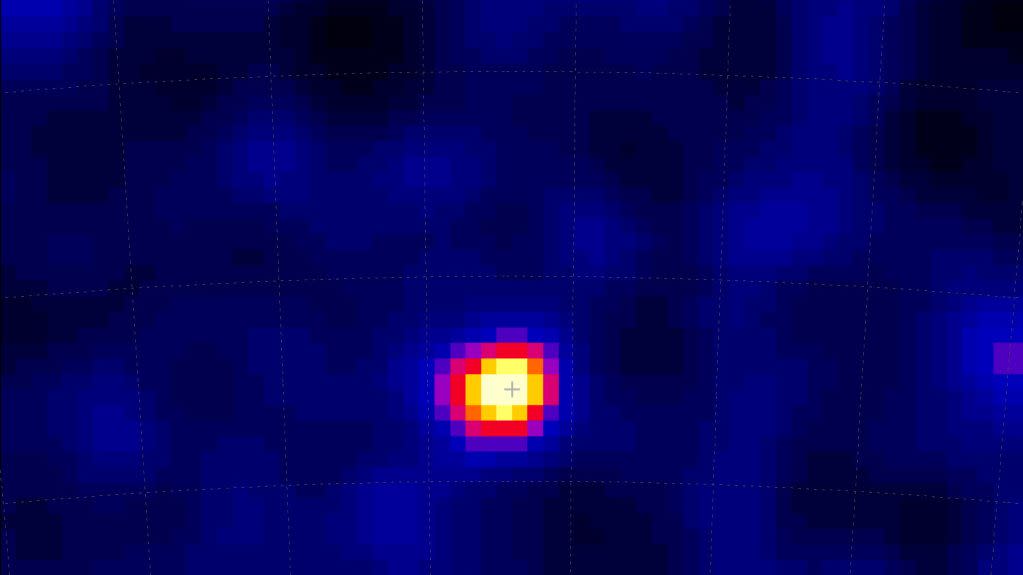This Is the Most Hi-Res Image of a Gamma Ray. Ever.

While space telescopes like James Webb and Hubble make breakthroughs on the regular, sometimes old-school techniques can deliver ground-breaking results of their own.
Using a stack of film, some cameras, a high-altitude balloon, and some clever engineering, scientists from Kobe University captured the highest-resolution image of gamma rays ever.
This novel experiment proves that scientific balloon experiments still hold an important place in the field of a deep space astrophysics.
While NASA’s $10 billion James Webb Space Telescope grabs a lot of headlines (and rightfully so), groundbreaking astronomical discoveries aren’t exclusive to such high-tech tools. Take, for instance, the image above: the highest-resolution photo of gamma rays ever captured.
Achieved without the need for advanced spacecraft or terrestrial arrays, this scientific feat was accomplished using a simple stratospheric balloon, layers of photographic film, and some ingenious engineering prowess.
Late last year, scientists from Kobe University described the details of their experiment in a paper published in The Astrophysical Journal. The subject of their groundbreaking astrophotography was the Vela Pulsar, located nearly 1,000 light-years away. This pulsar—which is a type of spinning neutron star formed when a larger star collapses in on itself—is a particularly interesting celestial object, as it only stretches about 12 miles across and makes 11 rotations every second.
Vela sends charged particles toward its poles that transmit in all flavors of the electromagnetic spectrum—radio waves, visible light, X-rays, and the highest energy wave of them all, gamma rays. This makes Vela unique among other pulsars, as a separate study in October of 2023 confirmed it’s the highest-energy pulsar known to science.
Led by Kobe University astrophysicist Shigeki Aoki, the team bundled sheets of photographic film together and sent the stack skyward—with the help of a stratospheric balloon—up to 25 miles into the Earth’s atmosphere. Because the film was stacked like a pancake, the team could track the trajectory of gamma ray particles, and the aparatus’s position in the stratosphere eliminated any would-be ground interference.
This particular photographic film method is actually pretty old-school, and relies on the principle that film turns dark in the presence of radiation. This is similar to how Kodak detected evidence of U.S. A-bomb testing in 1945 (though they likely didn’t know it at the time).
To make sure the balloon captured gamma rays emanating from the Vela pulsar, the team attached cameras that recorded the balloon’s position in relation to Vela. However, this still didn’t solve the problem of time-stamping these trajectories. So, the researchers developed an ingenious method of subtly shifting the last three film layers at regular intervals, but at different speeds—mimicking how hour, minute, and second hands work on a clock. When comparing these three layers, the team could essentially build a chronology of precise impact times.
The result? The highest-resolution image of gamma rays ever captured. As Vela pumped out gamma rays like “a lighthouse at night,” according to a press statement, this stack of film suspended in Earth’s stratosphere captured seven million tracks with an accuracy of 1/10,000 millimeters. Aoki estimates that this resolution is 40 times higher than your usual gamma-ray telescope.
“By means of scientific balloon-borne experiments, we can attempt to contribute to many areas of astrophysics,” Aoki said in a press statement, “and in particular to open up gamma-ray telescopy to ‘multi-messenger astronomy’ where simultaneous measurements of the same event captured through different techniques are required.”
While JWST and its high-tech companions will continue producing mind-boggling (and headline-grabbing) science, never underestimate the power of a stack of film and a well-placed balloon.
You Might Also Like

